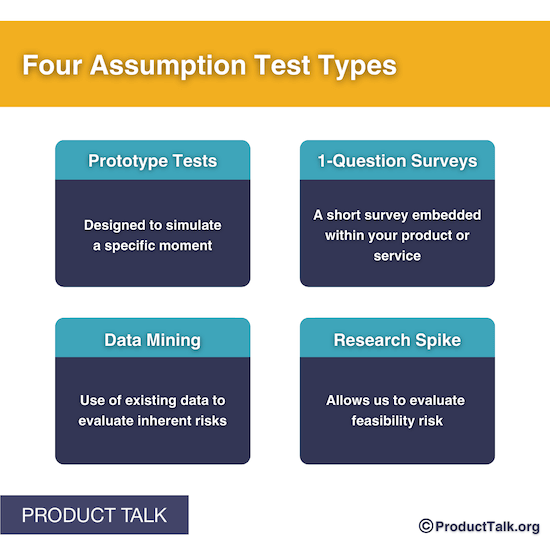Assumption Testing

What is assumption testing?
Assumption testing is a structured activity to evaluate the risk in underlying assumptions.
How does assumption testing work in product discovery?
For product teams practicing continuous discovery, assumption testing means testing specific assumptions—beliefs that may or may not be true—rather than testing whole ideas. Instead of building complete products to see if they work (which is slow and expensive), teams test the underlying assumptions that their ideas depend upon.
This allows teams to quickly compare and contrast multiple solutions to see which might work and which to discard.
What are the four categories of assumption tests?
In product development, most assumption tests fall into one of four categories:
- Prototype tests — Simulating a moment to evaluate customer behavior
- One-question surveys — Evaluating past or current customer behavior quickly
- Data mining — Using existing data to evaluate inherent risk
- Research spikes — Engineering activities to evaluate feasibility
What are the five types of product assumptions?
For product teams, assumptions can be categorized as:
- Desirability — Will customers want this?
- Usability — Can customers use this effectively?
- Feasibility — Can we build this?
- Viability — Is this good for the business?
- Ethical — Should we build this?
Why does assumption testing work?
Assumption testing allows you to quickly compare and contrast multiple solutions. By testing specific assumptions rather than whole ideas, you can determine which ideas might work and which to throw out—without building complete products.
The more specific your assumption, the easier it is to test.
Learn more:
- Assumption Testing: Everything You Need to Know to Get Started
Related terms:
- Assumptions
- Prototype
- Compare and Contrast Decisions
- Opportunity Solution Tree
Last Updated: October 25, 2025
